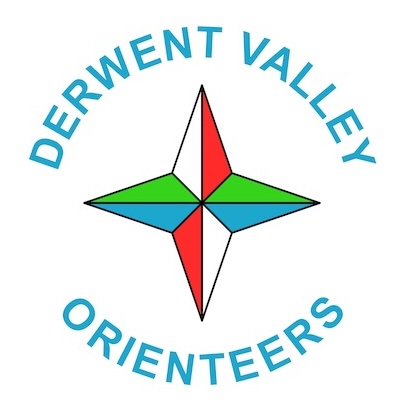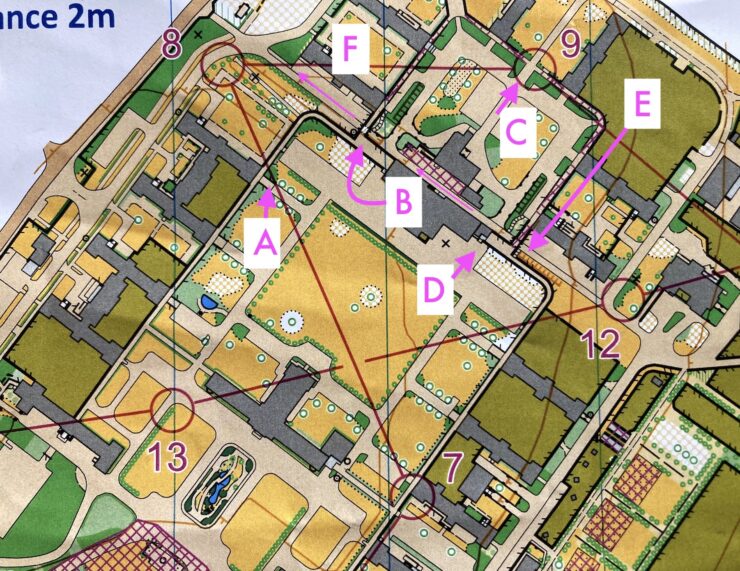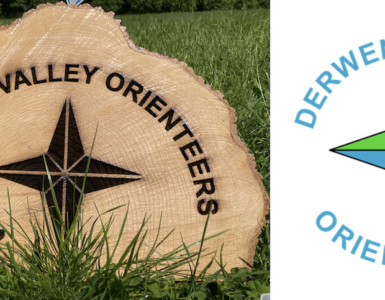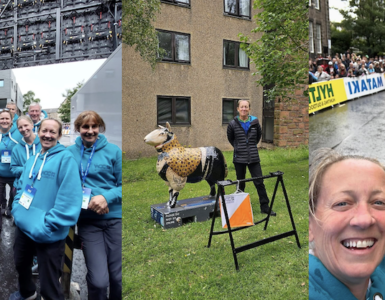By Newstrack’s Roving European Correspondent, Graham Johnson
Around the middle of September, when schools are back and normal people are at
work, we generally crowbar another cycling trip into the calendar, and when Val
spotted an advert for a Sprint Festival in Lille, this seemed a good place to start. We
were promised three events in one weekend, although this turned out to be five runs
in total, all for €25.
Indoor Sprint, Lycée International Hotelier
I’d never done an indoor sprint event so this was a particularly exciting prospect. I
have often studied the maps and courses from usually Swedish events when they
appear in CompassSport, and scratched my head in bewilderment at the mind-
boggling possibilities of 3D orienteering on multi-levels. Now I was to be given the
chance to put these theoretical possibilities into practice.
The ’Lycée International Hotelier’ turned out to be a catering college set in the Fives
district of Lille to the east of the station. From the 1860’s onward, 25 hectares of this
neighbourhood were devoted to factories producing steam locomotives and steel
(including the girders that today form the Eiffel Tower). Inevitably, this factory
declined in the face of foreign competition and closed altogether in 2001. The whole
area has been regenerated, using the original structures wherever possible.
The catering college adjoined one side of what had been the shed where the
locomotives were built. Here are two photos, one showing the factory floor in its
heyday and the other showing it as it is now; it served as the event assembly area.

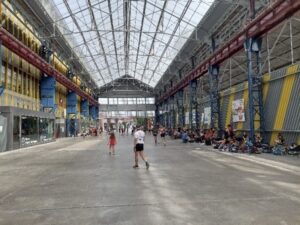
One side of the college looked out over our Assembly so that, before our runs, we
had tantalising views of some of our controls, and occasional glimpses of orienteers as they located these controls, or alternatively hunted fruitlessly for their non-existent
forms in adjoining rooms (see photo).
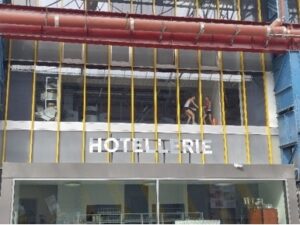
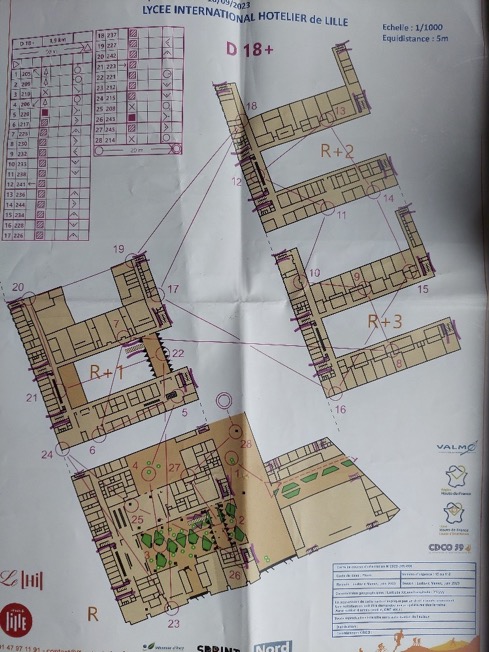
There were flour levels, a ground floor, part of which was devoted to an indoor garden, and three upper floors used as classrooms. It was into the garden that we were initially launched. Unusually for me, I had noted the scale of the map in advance of my run, but my brain was still not prepared for 1:1000. It was like orienteering in the Land of the Giants, where a few steps took you way beyond the control and into a completely different part of the map.
Just as I had adjusted to these proportions, it was time to leave the first floor and venture upstairs. The central feature of these upper levels was a ’U’-shape, along the arms of which ran the classrooms, access to which was gained by double flights of stairs. This meant that you left one level moving west, but emerged facing east! My brain, already befuddled by the map scale, never came to terms with this reversal of perceptions; it was like Alice Through The Looking Glass, everything appeared as a reverse reflection of what preceded on the floor below!
As if this were not confusing enough, the fourth storey of the building had one corridor blocked off so that navigation from one side to another involved descent to and ascent from the floor below. Three times I tried to run through this impassible barrier, and three times I failed. Learning by trial and error was a completely pointless strategy.
As you might have gathered from this, my first efforts at indoor orienteering were not a great success, but nevertheless it was a hoot from beginning to end. Controls took the form of boxes stuck to the top of traffic cones – what a brilliant idea – and the planner had put out scores of these so that, if the control you wanted was one corner of a recess, you were bound to find two controls at either side of it. In the photograph, there are seven controls, four of which are in the background.

I can say that I did overtake Yannick Michiels, the Belgian who came second in the 2017 World Games Sprint, but I would have to acknowledge that he was walking round instead of adopting my own headless chicken technique.
The only blot on the whole exhilarating experience came when Val and I tried to download, only to find that our dibber numbers had been swapped on the computer. Now I may not be able to do it, but I do know that it is a simple process to correct this anomaly. It nevertheless proved to be beyond the capabilities of the download operator who did promise that this would be corrected ‘plus tard’. Of course, it wasn’t, so to this day I have no idea of my time or position, both of us going down as mispunched in the results.
Bailleul Sprint
The indoor sprint took place in the afternoon. The second sprint took place in the evening. The only problem was that it was in Bailleul, some 30km away. We solved the logistics of this by a combination of France’s admirable railway system and our bikes which we just happened to have brought along.
It was only last issue of Newstrack that I commented on the number of surplus medical institutions available for sprints in Belgium. Well, it seems that the same applies to France too, because the whole of the sprint competition took place in the grounds of a mental health hospital – though I never saw a single patient or doctor while I was running; very odd. Those of us who were around in the sixties will probably remember The Prisoner wherein Patrick McGoohan tried and failed every week to escape Port Merrion; well, the whole place had something of the air of The Village to it, slightly eerie and unworldly.
I still don’t know why – perhaps it was in anticipation of the European Sprint Champs – but anybody who was under 35 was put in a quarantine pen for this event, which seemed a bit excessive. This had unfortunate repercussions for us, because there were two different routes to the Start, one from Assembly, one from Quarantine. They didn’t meet until the sprint area itself, so having followed one set of tapes from Assembly, we in innocence continued to follow the other set of tapes back towards Quarantine, missing the Start altogether. If there’s a flaw, we will find it.
The sprint was particularly memorable for one particular leg – see below:

How would you get from 7 to 8?
The centre of the mapped area comprised a garden surrounded by a raised walkway. Having punched 7, I entered the gardens and headed diagonally towards No 8, having spotted a gap in the wall on the other side (Point A). Having got through the gap, I could see no other way out than Point B which enabled me to access the control by running round the perimeter of the area, via Point C. Not the most efficient way, but the only one I could find in the circumstances.
The actual quickest route was via the exit from the garden at D and then down the steps at E. You will see that the planner has marked the area adjacent to the stairs as out of bounds. This refers only to the walkway above the canopy. Obvious, isn’t it? Having run down the stairs, you could then turn left and run under the walkway towards Control 9 using the route marked F!
I hope you’ve followed this, because not only is this difficult to work out on the hoof, it is also a bit of a swizz too! How many people chose this route on the night I have no idea.
Lille Knockout Sprints
In my humble opinion, UK organisers of big events spend inordinate amounts of time producing multi-page volumes of excessive event details when all I’m interested in is about five pieces of information that can be written on the back of a postcard. I’m pleased to say that the French tend to follow the minimalist approach, but sometimes you can go too far.
In advance of this event, all we knew is that we would be running in some sort of knockout sprint competition, but if you can understand the following, you’re a better logician than I am:
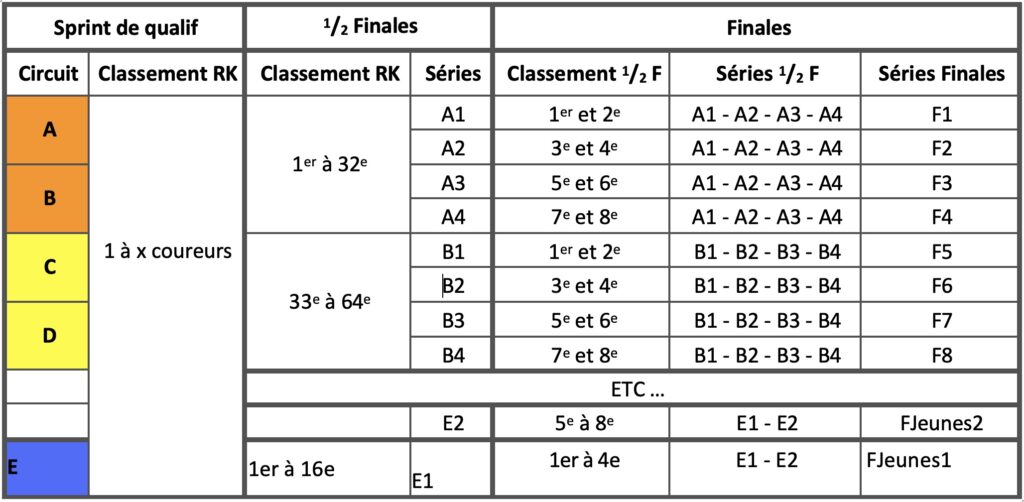
The event centre was the HQ of the local Lille orienteering club, which also doubled as HQ for the canoe club. Imagine if DVO had a club HQ!
The first round took place in the Bois Blancs area of Lille, yet another district which had undergone – and still was undergoing – regeneration; the building where the Start took place housed tech start-ups for example – see below:
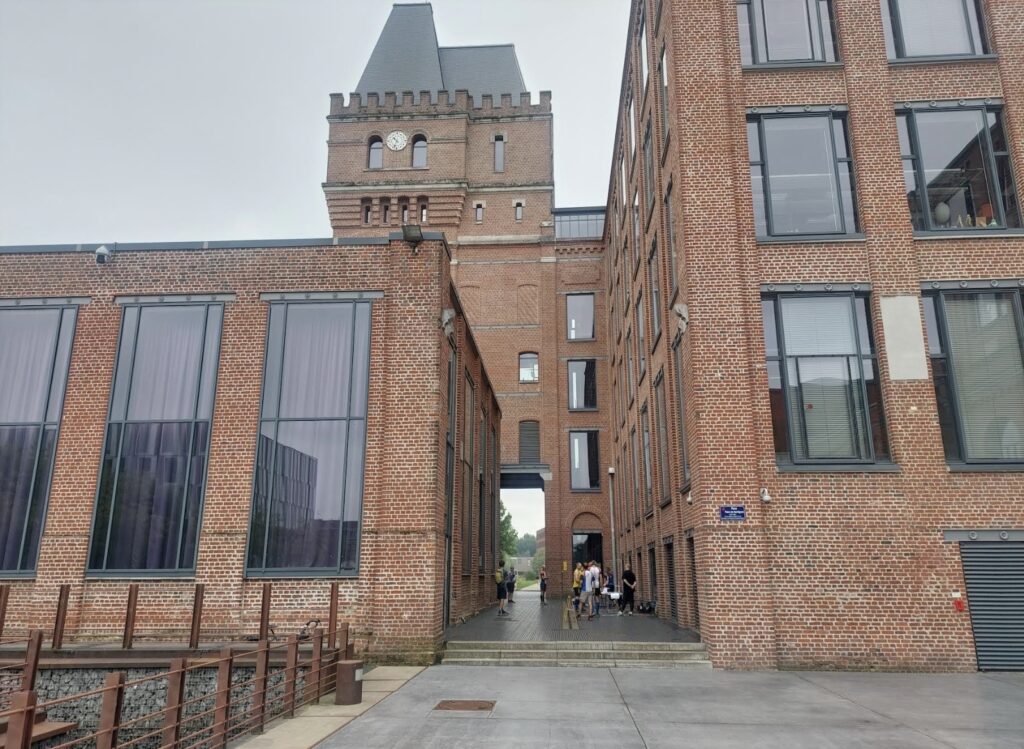
The course was a cross between a Sprint and an Urban, being 3.4km. That’s some distance for a Sprint. It dawned on us that if this was the first leg of a three-leg knockout, we were going to be ending up running (sprinting?) more than 10km! The reason was that all adult men and women – ages 21-80 – were running the same courses. This has a lot to commend it, I think. The planner has to produce only four courses (2 adult, 2 junior, M and W) when in sprint competitors, the length difference between different age classes can be as little as 200 metres. Perhaps 4 courses is taking it to an extreme (there were noticeably fewer senior runners such as myself on the Sunday compared to Saturday; others obviously knew they were letting themselves in for).
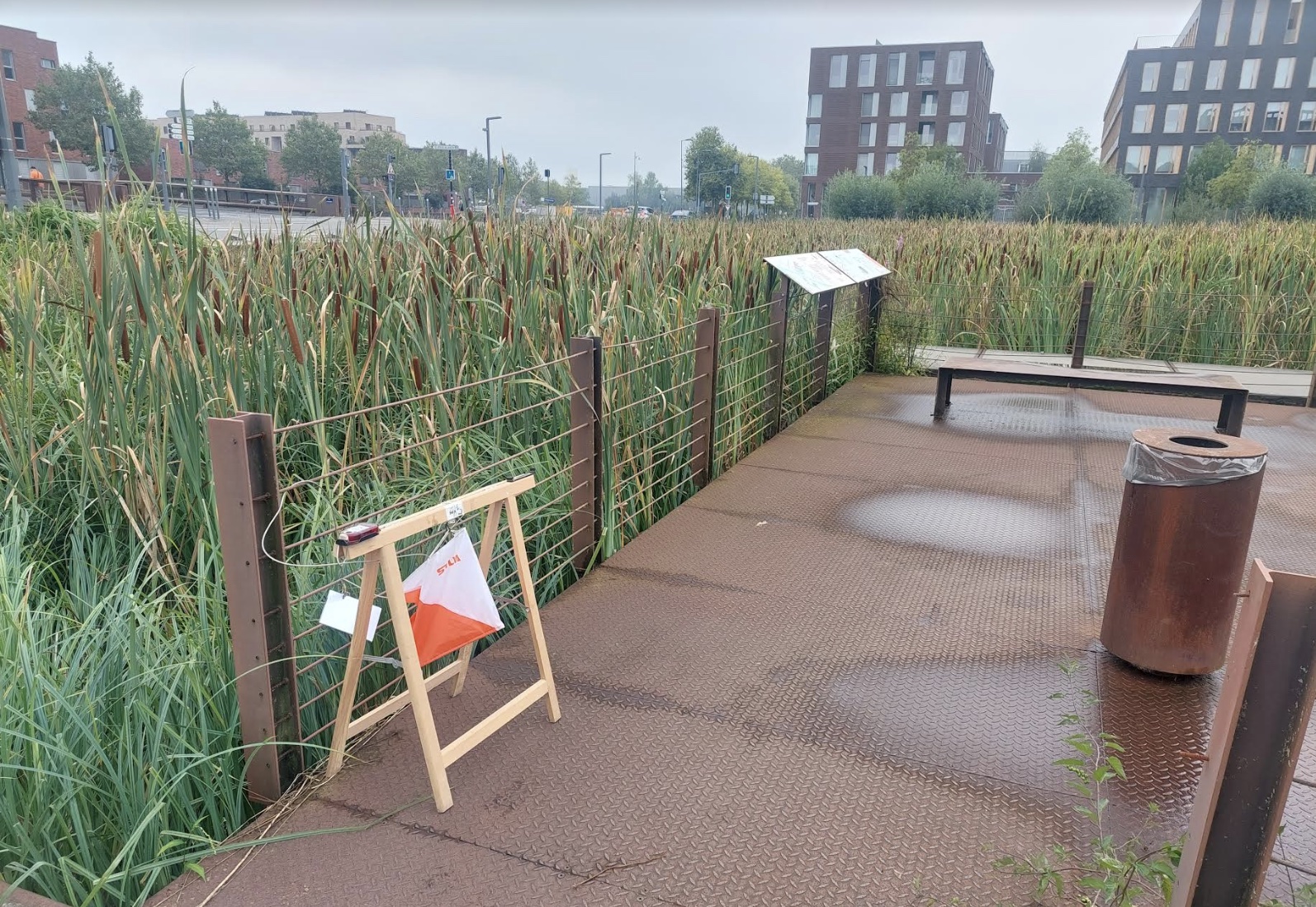
The orienteering was fairly straightforward, but enjoyable enough. I came 48th out of 72, which doesn’t sound impressive but it was against M21s, I hasten to repeat.
Back at HQ, we settled down for what we assumed, based on UK experience, would be a long wait for the semi-final start times. To avoid falling foul of French Sunday supermarket closing times, we nipped to the local Carrefour. Of course, while we were out, the start times were announced as was the instruction to ‘Suivez-moi’ to the next Start. Everyone duly followed the Pied Piper to the Semi Start leaving us to return to an empty HQ.
We rushed off to Start 2, seeking directions from an official along the way. Unfortunately, this official directed us to the Final Start, which hadn’t been signposted or even set up yet. After 2km jogging along the canal, we were caught up by the same official – on a bike – to explain breathlessly her mistake. By the time we’d found Start 2, not only had we piled 4 km onto our total distance for the day, all Semi starts had been completed.
How can you have a knockout competition with no-one to run against? We were given a map and left to follow the same courses as everyone else, but on a solo basis. How would we be timed? Oh, that will be dealt with ‘plus tard’, obviously the French equivalent of the Spanish ‘mañana ’ – you can guess what actually happened.
Well, I ran round the course, but I was somewhat miffed off, to put it politely, and my heart just wasn’t in it. I duly got myself disqualified when I missed the last control, about 30 metres from the Finish control. We did eventually catch up with the Finals, which were now meaningless, and it was a deflating end to an otherwise enjoyable weekend. A shame because both the Semis and the Final took place in woodland in what would have made for a very good, small local event.
By coincidence this was European Heritage Weekend and afterwards, we went to a building we had nearly run past in the morning. It was a local brewery, the difference being that everyone in the locality grew their own hops and, once a year, harvested them and brought them to the brewery for conversion into ale. The special atmosphere and sampling of the wares restored our spirits.
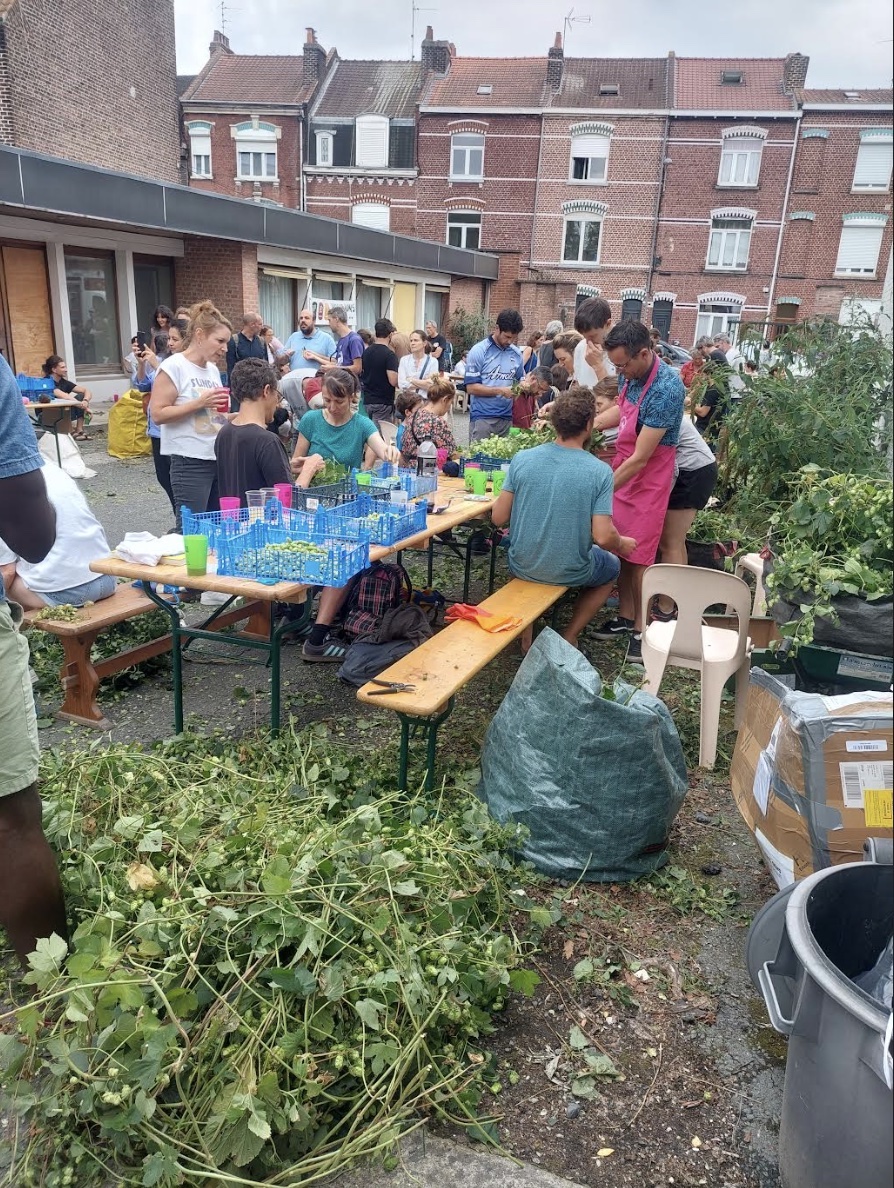
Would I go again? Yes, I think I would. The organisation left something to be desired at times, but at least we’d know what to expect next time, and we’d be better organised ourselves – no last-minute nipping out to the supermarket!
